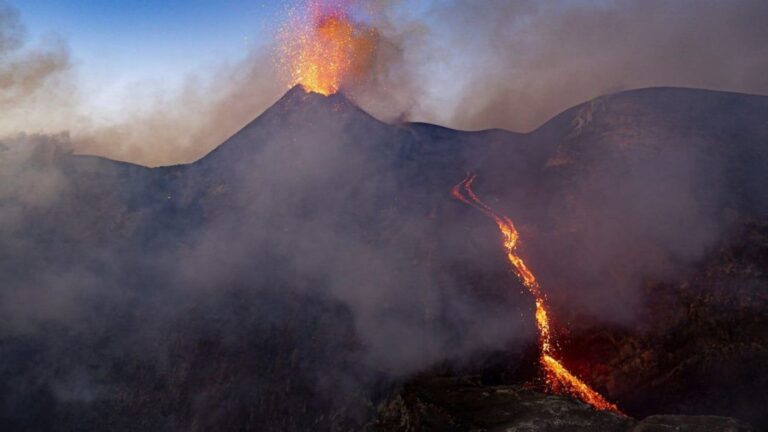A sudden increase in volcanic activity from Mount Etna, Europe’s tallest volcano, has caused several flight delays at Catania Airport. The Istituto Nazionale di Geofisica e Vulcanologia in Catania has also deduced that volcanic ash from Etna has reached a height of 4.35 km (2.7 miles) into the air. This led to the temporary closure of airspace near the airport, but services have since resumed. On the nearby Aeolian island, Stromboli has faced increased eruptions and spewed lava into the sea. Read on to find out how the eruptions of Mount Etna and Stromboli can affect your trip to Italy.
Impact of volcanic eruptions on air traffic
For the first time in four years, lava cascades have formed in one of the largest craters of Mount Etna, the highest active volcano in Europe, located in Sicily.
Watch the full video: https://t.co/BJw1WC6oQY pic.twitter.com/Ww2LrVlGua
— The Wall Street Journal (@WSJ) July 5, 2024
Due to the increase in volcanic activity of Etna, more than 90 return flights were cancelled at Catania airport. This affected around 15,000 travellers. Among them, Ryan Air was the most seriously affected airline, with 42 of its flights cancelled.
Many flights have also been diverted to Palermo airport, a four-hour drive from Catania. Italy’s civil protection has also stressed that these eruptions are not an isolated case. Italy and Iceland have the largest concentration of active volcanoes in Europe, potentially exposing their inhabitants to volcanic risk.
A popular summer destination, Stromboli has also raised concerns about its violent eruptions. Molten lava has been spewing into the sea, creating a towering cloud of smoke 2km high. Civil Protection Minister Nello Musumeci said the volcano was under surveillance, evacuation plans had been drawn up and the number of firefighters on the island had also doubled.
Stromboli last erupted in 2022 and caused no casualties. Before that, it erupted in 2019 and claimed the life of a 35-year-old hiker; the same year, 30 tourists had to jump into the sea to escape the eruptions. Despite frequent eruptions over the past 90 years, Stromboli continues to be a popular tourist site.
Eruptions of Mount Etan and Stromboli: advice for tourists
Tourists are advised not to visit the “no-go zones” as a crater region can experience volcanic activity and gas emissions at any time. During volcanic activity, tourists are also prohibited from using two-wheeled vehicles for 48 hours. In addition, the speed of all vehicles has been restricted to 30 km/h to avoid driving on ash.
(Photo credit: @Reuters/X)
Related: The Best Places to Visit in Italy Each Month, According to a Luxury Travel Expert
Note:
The information in this article is accurate as of the date of publication.


